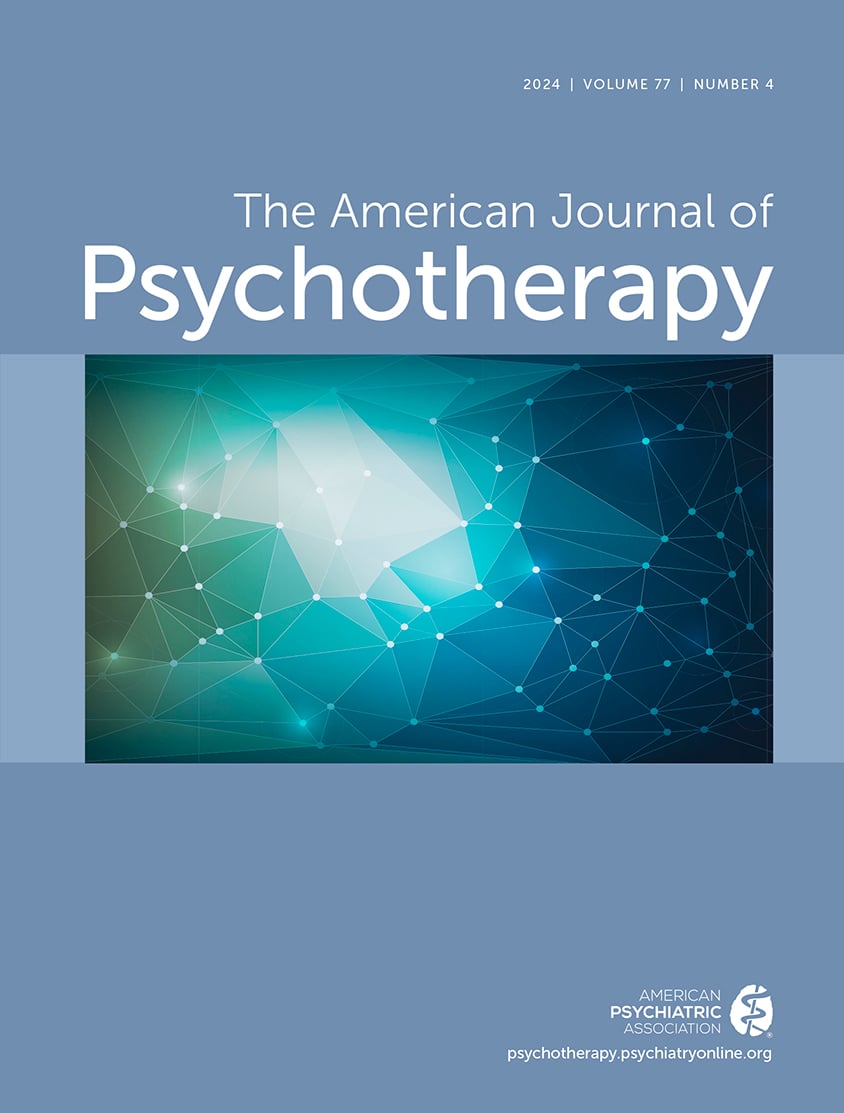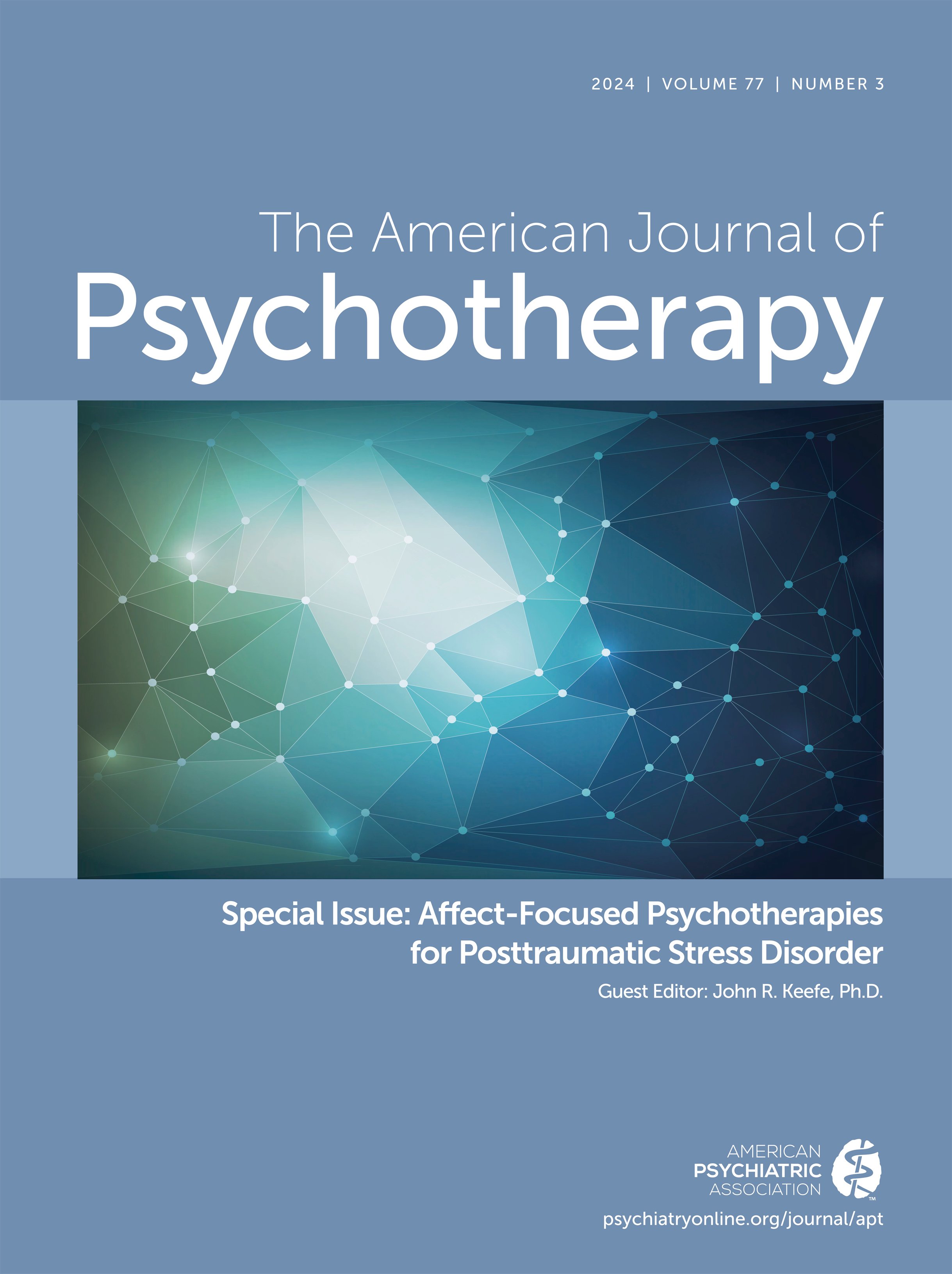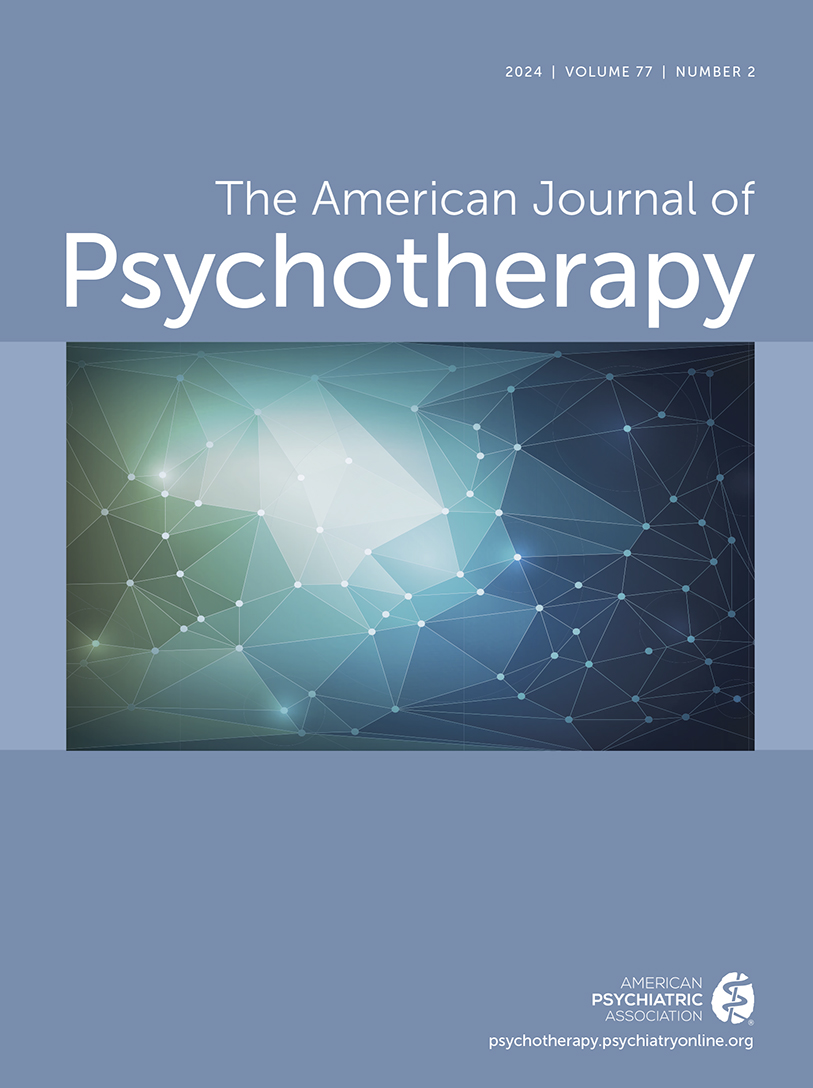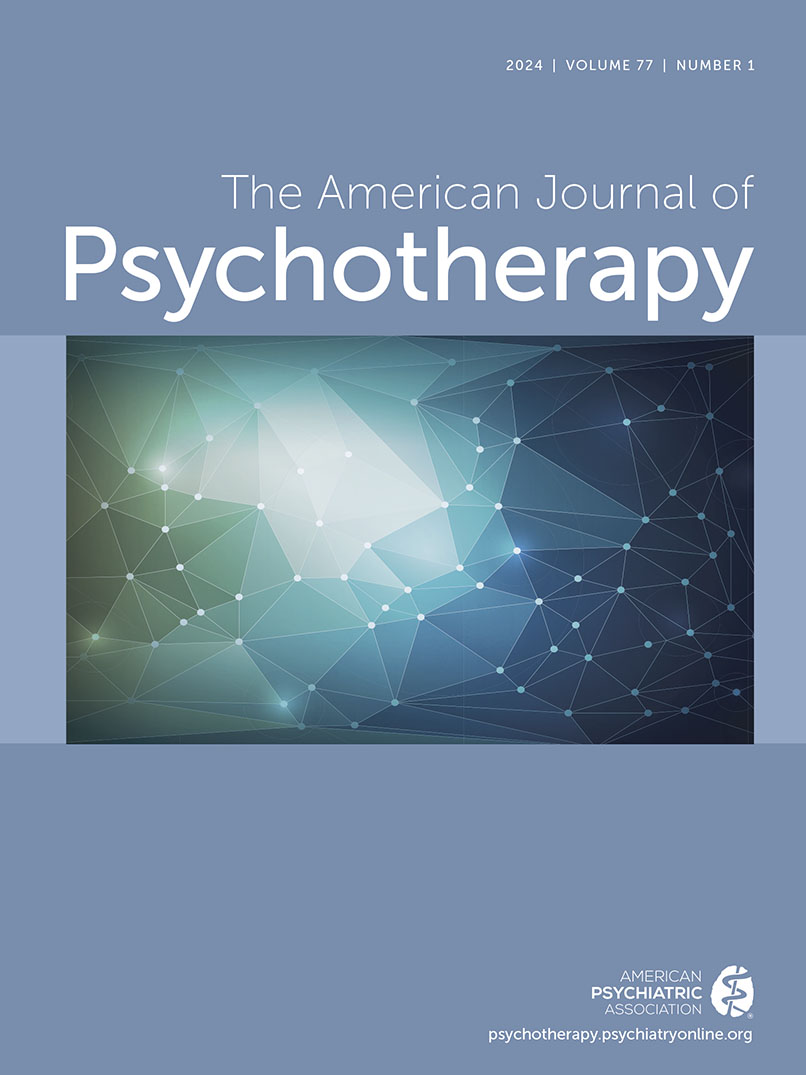American Journal of Psychotherapy
- Volume 49
- Number 4
- October 1995
Articles
Publication date: 01 October 1995
Pages473–494A rationale for the conceptualization of repetitive sexual behaviors as an addiction is presented. Five cases treated by individual psychotherapy are described and certain problems inherent in such treatments are delineated. Other treatment approaches, ...
https://doi.org/10.1176/appi.psychotherapy.1995.49.4.473Publication date: 01 October 1995
Pages484–503A developmental model forms the framework for the transtheoretical practice of psychotherapy. Major preoedipal and oedipal events, interfaced with significant two-person (mother-child) and three-person (father-mother-child) influences—dyadic deficit, ...
https://doi.org/10.1176/appi.psychotherapy.1995.49.4.484Publication date: 01 October 1995
Pages504–513This paper highlights dynamics that may interfere with the therapist’s identifying and addressing the erotic transference: (1) deficient training; (2) theoretical orientations that devalue the transference while espousing a “real” relationship including ...
https://doi.org/10.1176/appi.psychotherapy.1995.49.4.504Publication date: 01 October 1995
Pages514–525The positive feelings patients experience towards their therapists have important diagnostic and treatment considerations. This article reviews and integrates the literature on the therapeutic alliance, the positive transference, and the idealizing ...
https://doi.org/10.1176/appi.psychotherapy.1995.49.4.514Publication date: 01 October 1995
Pages526–539Theories on mother-daughter relationships have long been one-sided and biologically biased. The resulting images put the mental and physical health of mothers and daughters at risk. This article examines the mothers’ perspective, and highlights the ...
https://doi.org/10.1176/appi.psychotherapy.1995.49.4.526Publication date: 01 October 1995
Pages540–547Despite the existence of several theories in psychiatry, strict adherence to one is common. Sources of singularity include education, training, and the highly separate development of the theories. However, a deeper source may be the inherent uncertainty ...
https://doi.org/10.1176/appi.psychotherapy.1995.49.4.540Publication date: 01 October 1995
Pages548–557The role and meaning of narratives in psychoanalytically oriented psychotherapy has begun to be explored over the past few years. Little, if any, of this material has been related to adolescent psychotherapy and it is the purpose of this paper to make ...
https://doi.org/10.1176/appi.psychotherapy.1995.49.4.548Publication date: 01 October 1995
Pages558–567The micromanagement of the psychotherapy enterprise by private insurance interests has placed clinicians in new and unfamiliar roles in relation to their patients and to the professional marketplace. The value systems compatible with most managed care ...
https://doi.org/10.1176/appi.psychotherapy.1995.49.4.558Publication date: 01 October 1995
Pages568–581This paper identifies and discusses 10 broad-based themes or conclusions that could be drawn about the field of psychotherapy supervision now. These conclusions focus on various facets of clinical supervision theory, research, and practice; in so doing, ...
https://doi.org/10.1176/appi.psychotherapy.1995.49.4.568Book Review
Publication date: 01 October 1995
Pages582–583https://doi.org/10.1176/appi.psychotherapy.1995.49.4.582Publication date: 01 October 1995
Pages583–584https://doi.org/10.1176/appi.psychotherapy.1995.49.4.583Publication date: 01 October 1995
Pages584–585https://doi.org/10.1176/appi.psychotherapy.1995.49.4.584Publication date: 01 October 1995
Pages585–586https://doi.org/10.1176/appi.psychotherapy.1995.49.4.585Publication date: 01 October 1995
Pages586–588https://doi.org/10.1176/appi.psychotherapy.1995.49.4.586Publication date: 01 October 1995
Pages588–590https://doi.org/10.1176/appi.psychotherapy.1995.49.4.588Publication date: 01 October 1995
Pages590–591https://doi.org/10.1176/appi.psychotherapy.1995.49.4.590Publication date: 01 October 1995
Pages591–592https://doi.org/10.1176/appi.psychotherapy.1995.49.4.591Publication date: 01 October 1995
Pages592–593https://doi.org/10.1176/appi.psychotherapy.1995.49.4.592Publication date: 01 October 1995
Pages594–595https://doi.org/10.1176/appi.psychotherapy.1995.49.4.594aPublication date: 01 October 1995
Pages596–597https://doi.org/10.1176/appi.psychotherapy.1995.49.4.596Publication date: 01 October 1995
Pages597–598https://doi.org/10.1176/appi.psychotherapy.1995.49.4.597Publication date: 01 October 1995
Pages598–599https://doi.org/10.1176/appi.psychotherapy.1995.49.4.598Publication date: 01 October 1995
Pages599–600https://doi.org/10.1176/appi.psychotherapy.1995.49.4.599Publication date: 01 October 1995
Pages600–601https://doi.org/10.1176/appi.psychotherapy.1995.49.4.600aAbstracts
Publication date: 01 October 1995
Pages602–605https://doi.org/10.1176/appi.psychotherapy.1995.49.4.602Index
Publication date: 01 October 1995
Pages606–610https://doi.org/10.1176/appi.psychotherapy.1995.49.4.606Past Issues
View Issues Archive
Vol. 77 | No. 4

Vol. 77 | No. 3

Vol. 77 | No. 2
